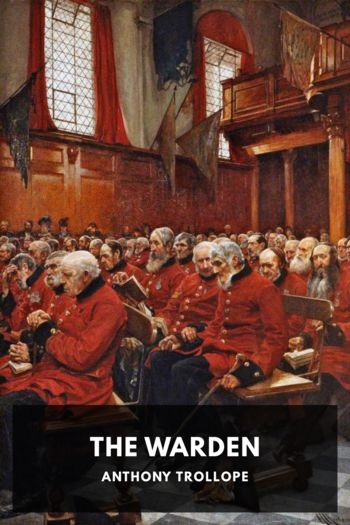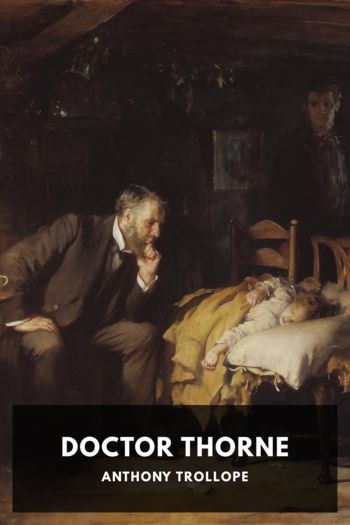Barchester Towers by Anthony Trollope (e reading malayalam books TXT) 📕

Description
Barchester Towers, published in 1857, is the sequel to Trollope’s The Warden and continues the story of the clerical doings in the fictional cathedral town of Barchester.
As this novel opens, the old Bishop of Barchester lies dying, and there is considerable doubt as to who will replace him. The Bishop’s son Dr. Grantly, the Archdeacon, has high hopes of succeeding him, but these hopes are dashed and a new Bishop, Dr. Proudie, is appointed. Along with Dr. Proudie comes his domineering wife and their ambitious chaplain the Reverend Mr. Slope.
The old clerical party headed by Dr. Grantly and the new, championed by Mrs. Proudie and Mr. Slope, are soon in contention over Church matters. These two parties represent a then-significant struggle between different evangelical approaches in the Church of England. One local issue in particular is fought over—the appointment of a new Warden for Hiram’s Hospital, the focus of the preceding book.
Mrs. Eleanor Bold is the daughter of Mr. Harding, the prior Warden. She has recently been widowed. The wealth she inherited from her late husband makes her an attractive match, and her affections are in contention from several prospective suitors, including the oily Mr. Slope. All of this lends itself to considerable humor and interest.
Though not well received by critics on its initial publication, Barchester Towers is now regarded as one of Trollope’s most popular novels. Together with The Warden, it was made into a very successful television series by the BBC in 1982.
Read free book «Barchester Towers by Anthony Trollope (e reading malayalam books TXT) 📕» - read online or download for free at americanlibrarybooks.com
- Author: Anthony Trollope
Read book online «Barchester Towers by Anthony Trollope (e reading malayalam books TXT) 📕». Author - Anthony Trollope
The hall was hung round with family female insipidities by Lely and unprepossessing male Thornes in red coats by Kneller, each Thorne having been let into a panel in the wainscoting, in the proper manner. At the further end of the room was a huge fireplace, which afforded much ground of difference between the brother and sister. An antiquated grate that would hold about a hundredweight of coal, had been stuck on to the hearth by Mr. Thorne’s father. This hearth had of course been intended for the consumption of wood faggots, and the iron dogs for the purpose were still standing, though half-buried in the masonry of the grate. Miss Thorne was very anxious to revert to the dogs. The dear good old creature was always glad to revert to anything, and had she been systematically indulged, would doubtless in time have reflected that fingers were made before forks and have reverted accordingly. But in the affairs of the fireplace Mr. Thorne would not revert. Country gentlemen around him all had comfortable grates in their dining-rooms. He was not exactly the man to have suggested a modern usage, but he was not so far prejudiced as to banish those which his father had prepared for his use. Mr. Thorne had indeed once suggested that with very little contrivance the front door might have been so altered as to open at least into the passage, but on hearing this, his sister Monica—such was Miss Thorne’s name—had been taken ill and had remained so for a week. Before she came downstairs she received a pledge from her brother that the entrance should never be changed in her lifetime.
At the end of the hall opposite to the fireplace a door led into the drawing-room, which was of equal size, and lighted with precisely similar windows. But yet the aspect of the room was very different. It was papered, and the ceiling, which in the hall showed the old rafters, was whitened and finished with a modern cornice. Miss Thorne’s drawing-room, or, as she always called it, withdrawing-room, was a beautiful apartment. The windows opened on to the full extent of the lovely trim garden; immediately before the windows were plots of flowers in stiff, stately, stubborn little beds, each bed surrounded by a stone coping of its own; beyond, there was a low parapet wall on which stood urns and images, fawns, nymphs, satyrs, and a whole tribe of Pan’s followers; and then again, beyond that, a beautiful lawn sloped away to a sunk fence which divided the garden from the park. Mr. Thorne’s study was at the end of the drawing-room, and beyond that were the kitchen and the offices. Doors opened into both Miss Thorne’s withdrawing-room and Mr. Thorne’s sanctum from the passage above alluded to, which, as it came to the latter room, widened itself so as to make space for the huge black oak stairs which led to the upper regions.
Such was the interior of Ullathorne Court. But having thus described it, perhaps somewhat too tediously, we beg to say that it is not the interior to which we wish to call the English tourist’s attention, though we advise him to lose no legitimate opportunity of becoming acquainted with it in a friendly manner. It is the outside of Ullathorne that is so lovely. Let the tourist get admission at least into the garden and fling himself on that soft sward just opposite to the exterior angle of the house. He will there get the double frontage and enjoy that which is so lovely—the expanse of architectural beauty without the formal dullness of one long line.
It is the colour of Ullathorne that is so remarkable. It is of that delicious tawny hue which no stone can give, unless it has on it the vegetable richness of centuries. Strike the wall with your hand, and you will think that the stone has on it no covering, but rub it carefully, and you will find that the colour comes off upon your finger. No colourist that ever yet worked from a palette has been able to come up to this rich colouring of years crowding themselves on years.
Ullathorne is a high building for a country-house, for it possesses three stories, and in each story the windows are of the same sort as that described, though varying in size and varying also in their lines athwart the house. Those of the ground floor are all uniform in size and position. But those above are irregular both in size and place, and this irregularity gives a bizarre and not unpicturesque appearance to the building. Along the top, on every side, runs a low parapet, which nearly hides the roof,





Comments (0)